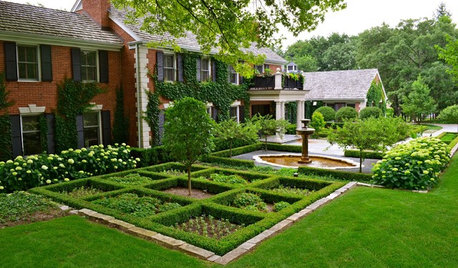still confused about potting soil
DesertHills
18 years ago
Related Stories

CONTAINER GARDENSContainer Garden Basics: How and When to Water Potted Plants
Confused about soil moisture, the best time to water and what watering device to use? This guide can help
Full Story
GARDENING GUIDESHow to Stop Worrying and Start Loving Clay Soil
Clay has many more benefits than you might imagine
Full Story
GARDENING GUIDES10 Solutions for Soggy Soil
If a too-wet garden is raining on your parade, try these water-loving plants and other ideas for handling all of that H2O
Full Story
CONTAINER GARDENSContainer Gardening Basics: The Dirt on Soil
Learn the types of potting soil available and the best mixes to help your containers thrive
Full Story
GARDENING GUIDESHow to Pick a Mulch — and Why Your Soil Wants It
There's more to topdressing than shredded wood. Learn about mulch types, costs and design considerations here
Full Story
GARDENING GUIDESNew Ways to Think About All That Mulch in the Garden
Before you go making a mountain out of a mulch hill, learn the facts about what your plants and soil really want
Full Story
GARDENING GUIDESGrow a Beautiful Garden in Alkaline Soil
Got alkaline soil? Learn how to manage it and the many beautiful plants that will thrive in this ‘sweet’ soil
Full Story
FARM YOUR YARDHow to Get Good Soil for Your Edible Garden
The nutrients in your soil feed the plants that feed you. Here are tips on getting it right — just in time for planting season
Full Story
LANDSCAPE DESIGNSmall Garden? You Can Still Do Bamboo
Forget luck. Having bamboo that thrives on a wee plot just takes planning, picking the right variety, and keeping runners in check
Full Story
GARDENING GUIDESBoxwood: Still Shape-Shifting After 350 Years
Wild or mild, the humble boxwood still brings style and order to all kinds of gardens
Full Story



username_5
tapla (mid-Michigan, USDA z5b-6a)
Related Discussions
Confused about perennial tulips! Types and soil..
Q
Confused about my soil- topsoil and deeper soil
Q
Confused about preparing soil for new veggie bed
Q
Confused about Soil...
Q
DesertHillsOriginal Author
tapla (mid-Michigan, USDA z5b-6a)
teedup1
tapla (mid-Michigan, USDA z5b-6a)
username_5
username_5
tapla (mid-Michigan, USDA z5b-6a)
DesertHillsOriginal Author
jenny_in_se_pa
tapla (mid-Michigan, USDA z5b-6a)
DaisyLover
jenny_in_se_pa
username_5
japaninvirginia
DaisyLover
SurePlantsAlot
tapla (mid-Michigan, USDA z5b-6a)
DesertHillsOriginal Author
breasley
tapla (mid-Michigan, USDA z5b-6a)
japaninvirginia